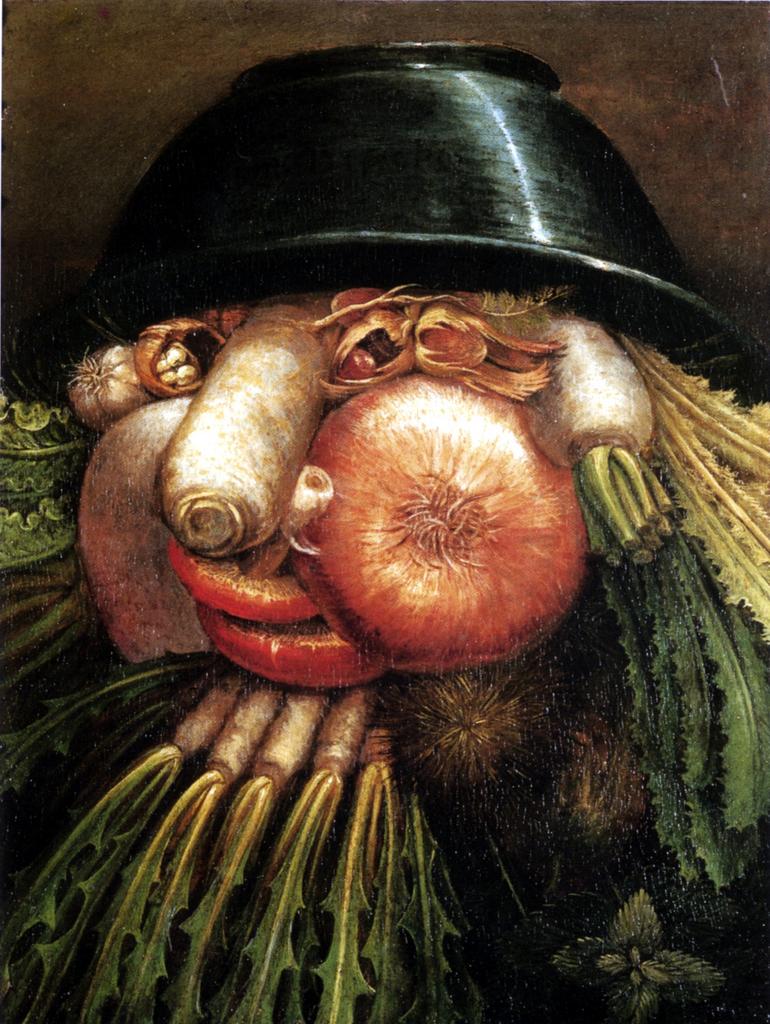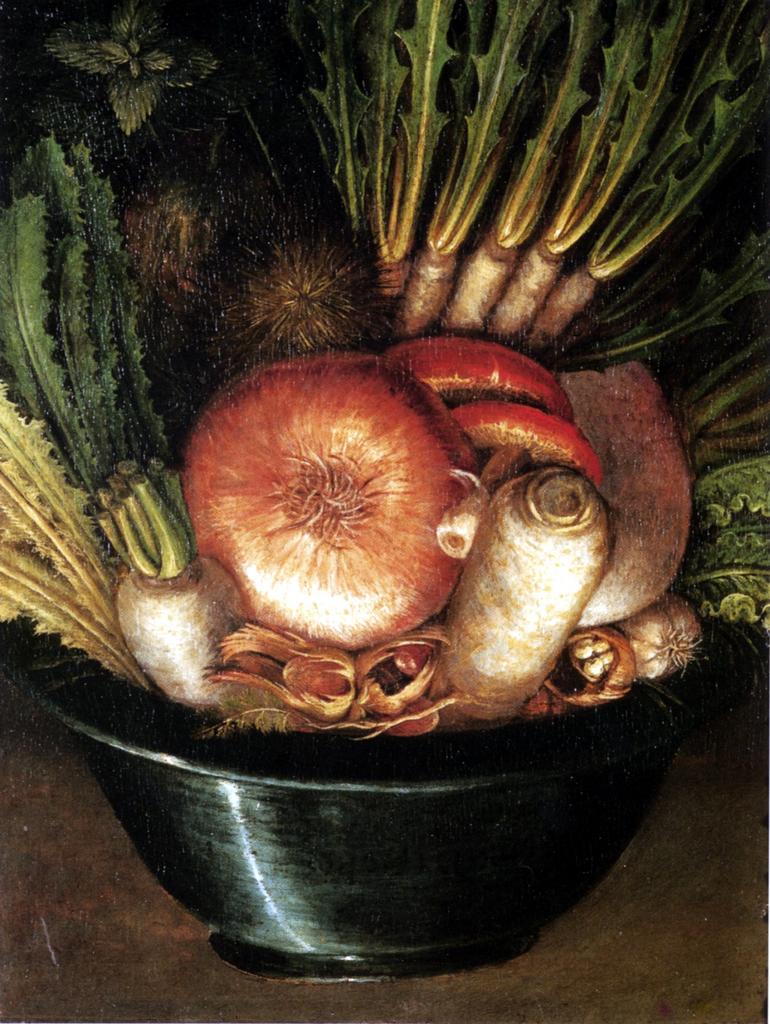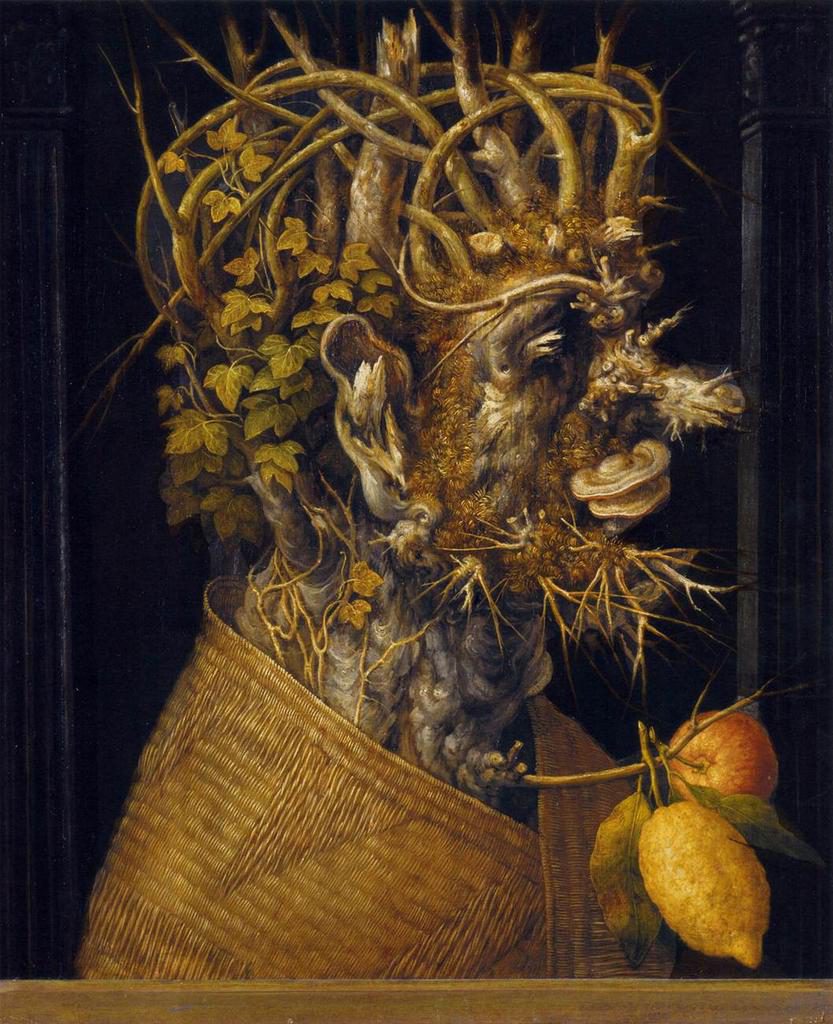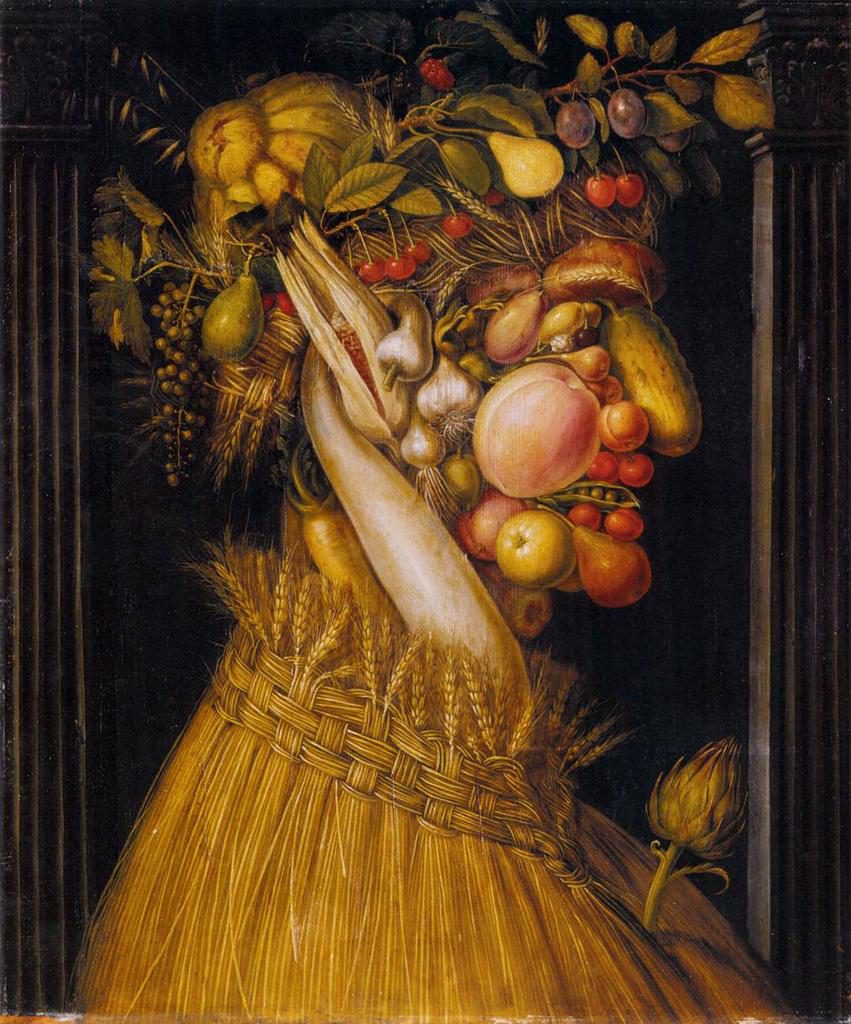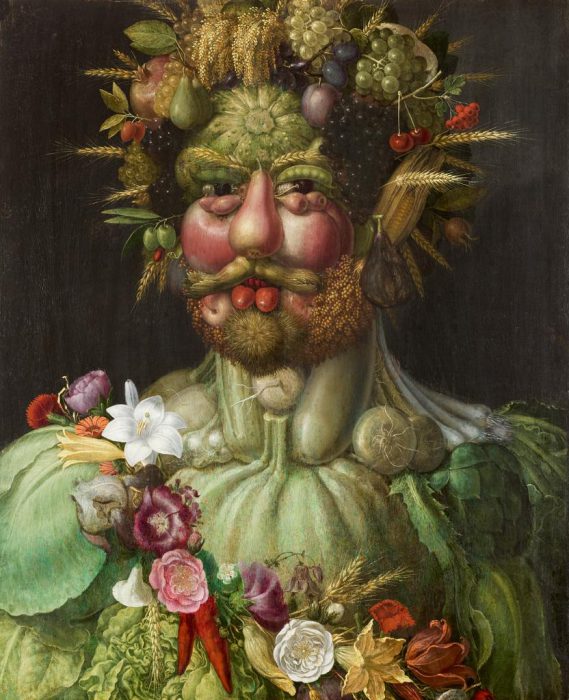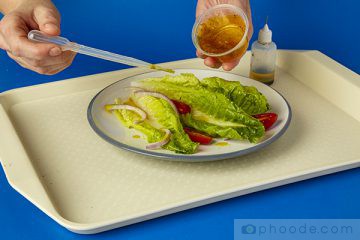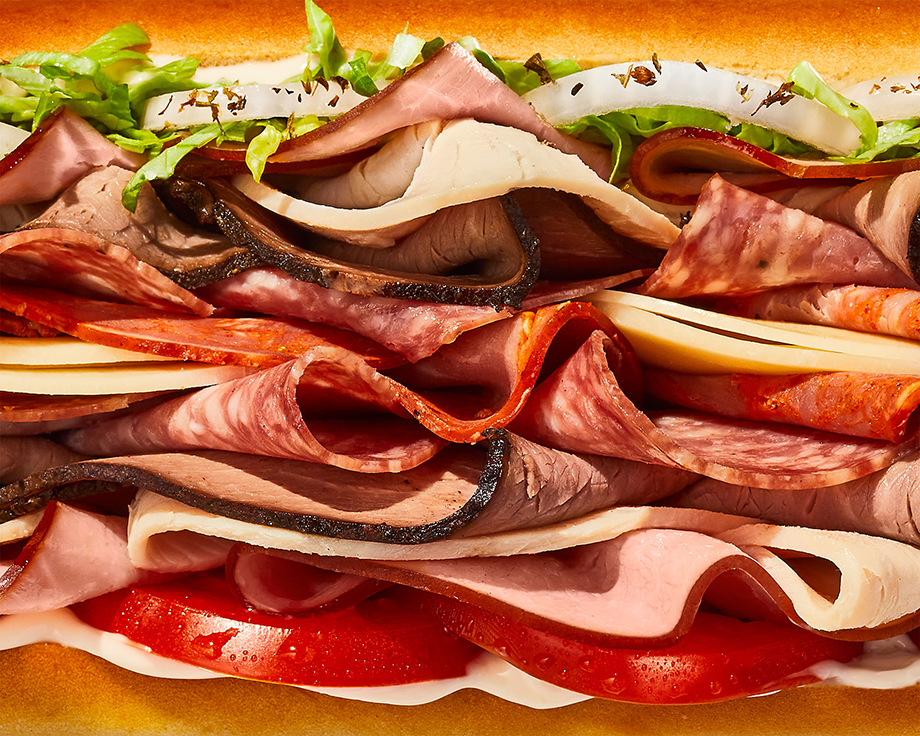Giuseppe Arcimboldo Renaissance Food Paintings Merge Portrait and Still Life
Around the year 1550, a young artist from Milan took his first professional steps. Surrounded by cathedrals, he was tasked with putting together the elaborate stained glass windows that towered over patrons during mass. Some ambitious individuals might have scoffed at the task of putting together hundreds of tiny bits of translucent colored shapes by hand. However, the labor intensive exercise likely went on to heavily influence the truly unique paintings Giuseppe Arcimboldo would create later in life.
It didn’t take long for Arcimboldo to move up the artistic ranks and leave church work behind. In fact, he enjoyed positions as a court portraitist in Vienna and Prague. Throughout the course of his adult life, he’d go on to make plenty of the conventional work prominent throughout the 16th century. However, the pieces that grabbed the attention of contemporaries and stood the test of time were hardly average.
From afar, his portraits look straight forward and ordinary. However, when one starts studying the details, things begin to border on the bizarre…
Upon closer inspection, what once appeared to be the bridge of a nose transforms into a pear or root vegetable. Tufts of hair become thickets of branches interlocked within each other’s arms.
Arcimboldo’s Renaissance food paintings are classified as being a part of the mannerist movement, which more or less served as a stepping stone between high Renaissance and Baroque art periods. In particular, mannerist artists had the tendency to focus on the push-and-pull relationship between humanity and nature. Giuseppe’s work accomplishes this quite literally, using vegetables, fruits, and meats to composite detailed human faces. One of his most famous series, titled Four Seasons, personifies winter, spring, summer, and fall using nothing more than the bounty each period produces.
Some might say that Arcimboldo was simply catering to the audience he had available. After all, his works came out at a time where puzzles and riddles resonated with secular crowds. Even so, his Renaissance food paintings are unlike any others. Managing to marry portrait and still life as one, his surviving imagery is captivating yet slightly unsettling. Not every artist can revamp a set of cherries into a piercing set of dark eyes. Part of what makes Arcimboldo’s work so striking is that it takes a step beyond the symbolism that’s prominent throughout the still lives of the middle ages. Instead, he was one of the first painters to explore the idea of taking and rearranging an object(s) (in this case, produce) to create something drastically different.
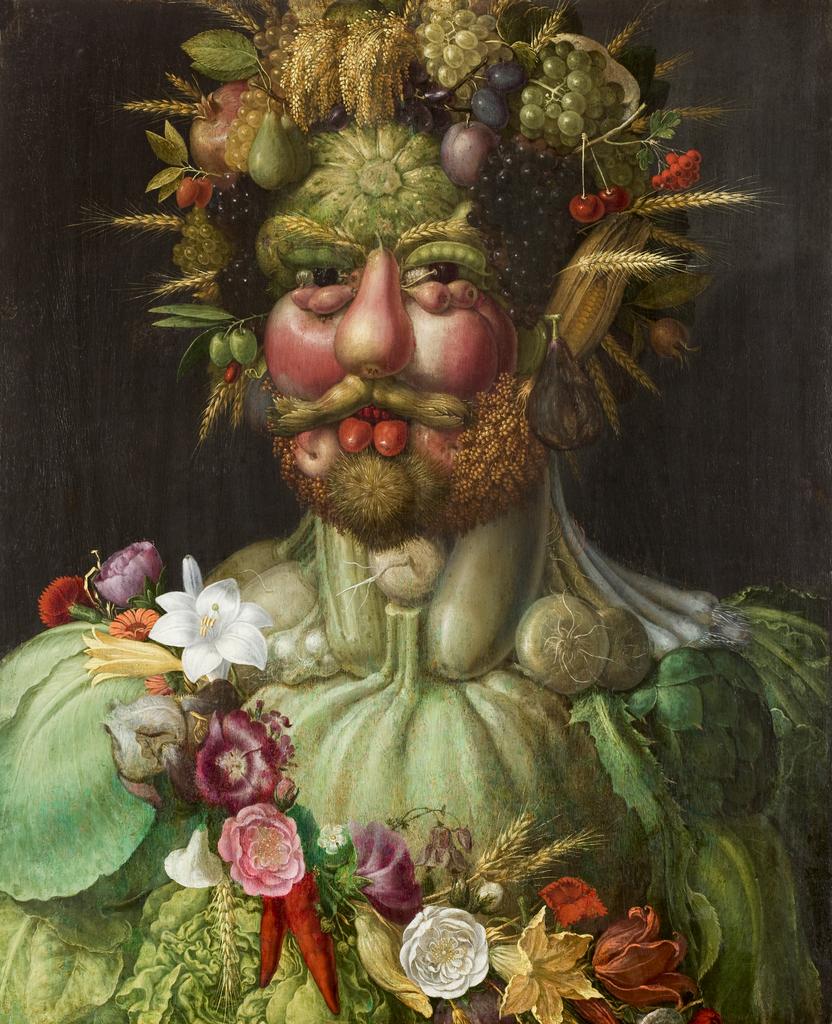
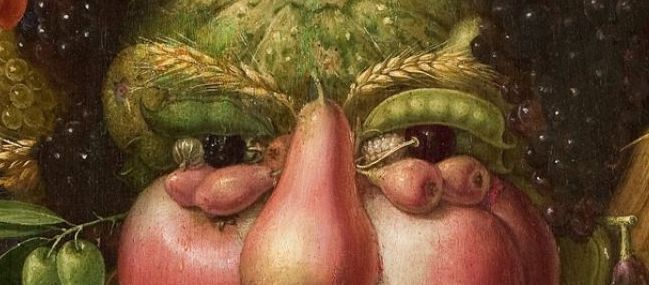
Sure, these fruity faces may seem a little bit funny. But, on a deeper level, each image is a careful study of comparing and contrasting shapes and textures. It becomes impossible to ignore just how much a long curled finger can resemble a raw turnip. Just as one might pour detail into the hairs of a ragged beard, he focused on the edges of lettuce leaves. Four hundred years before Salvador Dali or Maxwell Ernst picked up a brush, Arcimboldo set down the groundwork for surrealism. What’s more, he did so with little more than oil paints and what he might have found in the garden.




